The Nikon Small World Photomicrography Competition lets us see beyond the capabilities of our unaided eyes. Almost 2000 entries from 70 countries vied for recognition in the 37th annual contest, which celebrates photography through a microscope. Images two through 21 showcase the contest's winners in order, and are followed by a selection of other outstanding works. Scientists and photographers turned their attention on a wide range of subjects, both living and man-made, from lacewing larva to charged couple devices, sometimes magnifying them over 2000 times their original size. -- Lane Turner (38 photos total)

Wim van Egmond of the Micropolitan Museum in Rotterdam, Netherlands photographed a Leptodora kindtii (giant waterflea) eye from a living specimen using the differential interference contrast method. (Wim van Egmond)

Dr. Igor Siwanowicz of the Max Planck Institute of Neurobiology in Martinsried, Germany shot "Portrait of a Chrysopa sp. (green lacewing) larva" at 20x magnification using the confocal method. (Dr. Igor Siwanowicz)
A blade of grass at 200x magnification by Dr. Donna Stolz of the University of Pittsburgh using confocal stack reconstruction and autofluorescence. (Dr. Donna Stolz) 
A living specimen of Melosira moniliformis at 320x magnification imaged with differential interference contrast by Frank Fox of Fachhochschule Trier in Trier, Rheinland-Pfalz, Germany. (Frank Fox) 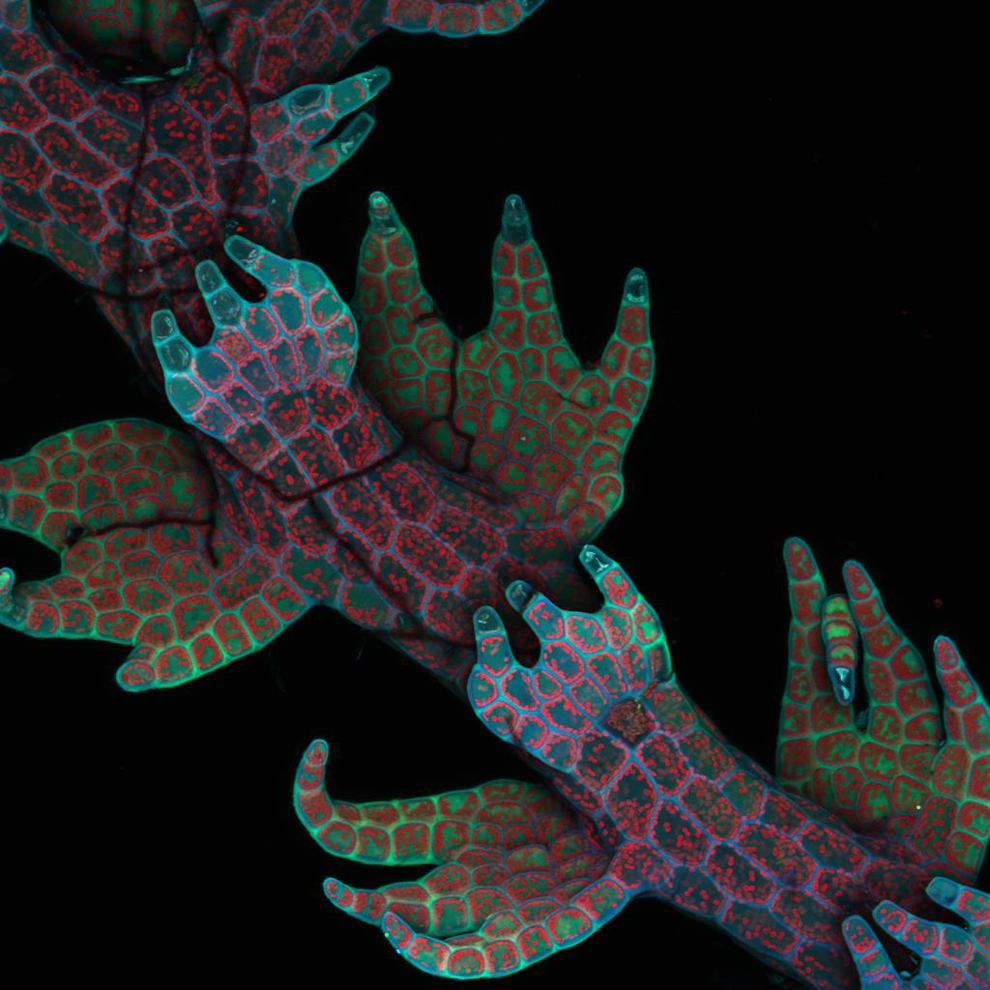
Intrinsic fluorescence in Lepidozia reptans (liverwort) at 20x magnification in a live mount with confocal microscopy by Dr. Robin Young of the University of British Columbia in Vancouver. (Dr. Robin Young) 
The surface of a microchip in a 3D reconstruction at 500x magnification using incident light and Normarski interference contrast by Alfred Pasieka of Germany. (Alfred Pasieka) 
Cracked gallium arsenide solar cell films at 50x magnification using the brightfield method by Dennis Callahan of the California Institute of Technology in Pasadena. (Dennis Callahan) 
A mouse nerve fiber layer on a retinal flatmount at 40x magnification by Gabriel Luna of the UC Santa Barbara Neuroscience Research Institute in Santa Barbara, Calif. using the laser confocal scanning method. (Gabriel Luna) 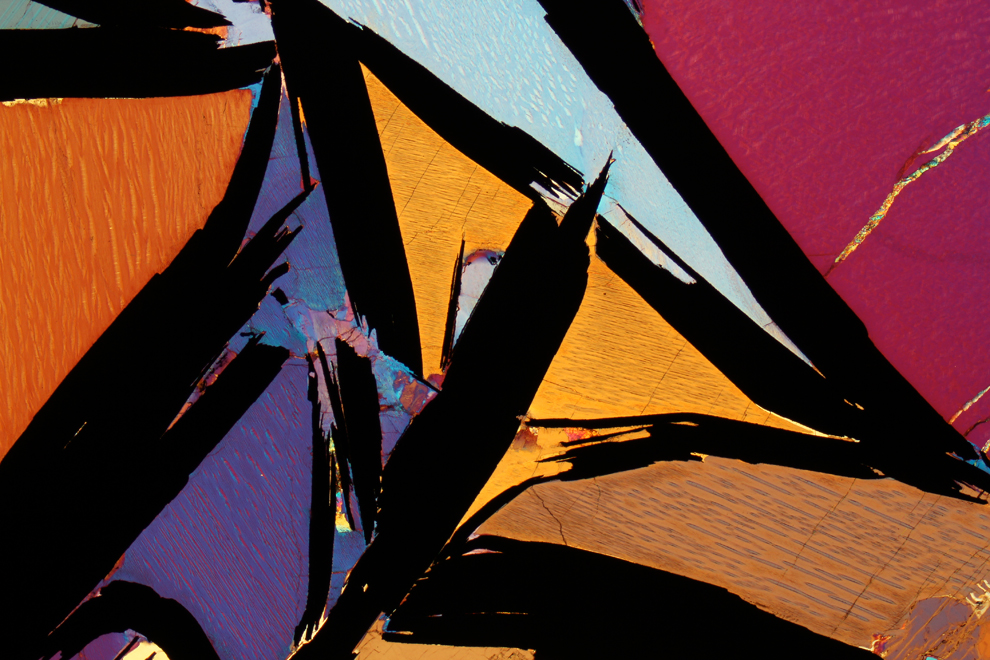
Graphite-bearing granulite from Kerala, India in polarized light at 2.5x magnification by Dr. Bernardo Cesare of the Department of Geosciences in Padova, Italy. (Dr. Bernardo Cesare) 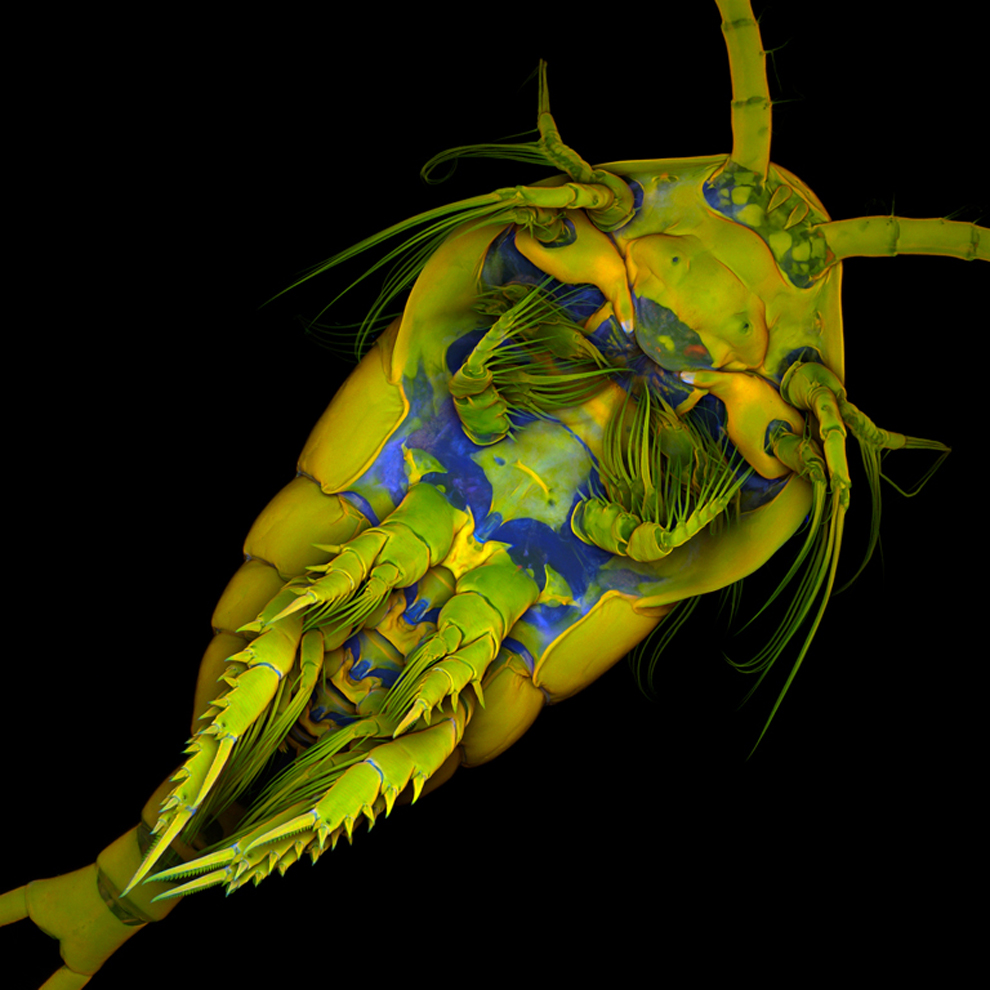
A marine copepod, Temora longicornis, at 10x magnification imaged by Dr. Jan Michels of Christian-Albrechts-Universität zu Kiel in Kiel, Germany using the confocal process with autofluorescence and Congo red fluorescence. (Dr. Jan Michels) 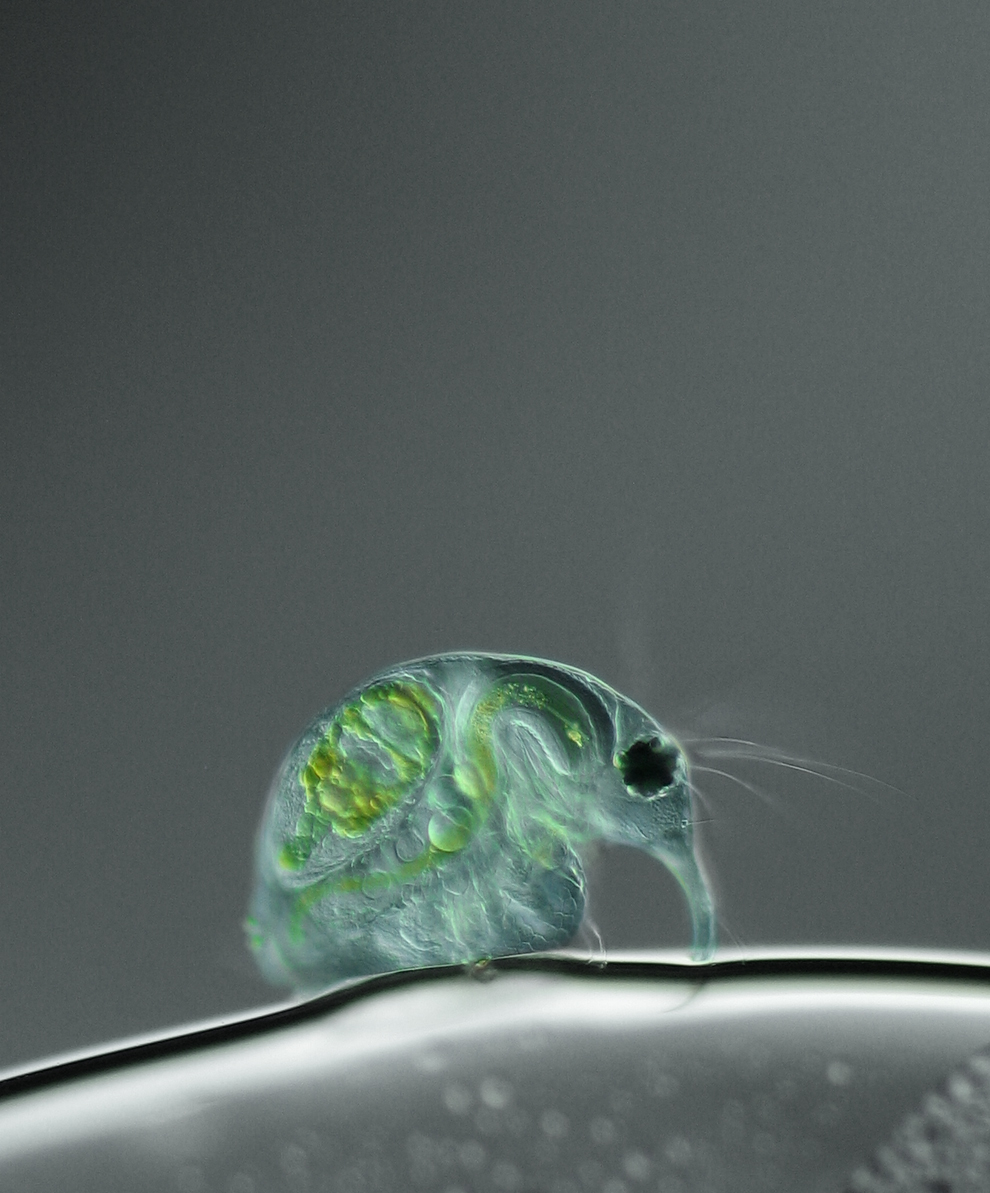
Joan Rohl of the Institute for Biochemistry and Biology in Potsdam, Germany used differential interference contrast to capture a freshwater water flea, Daphnia magna, at 100x magnification. (Joan Rohl) 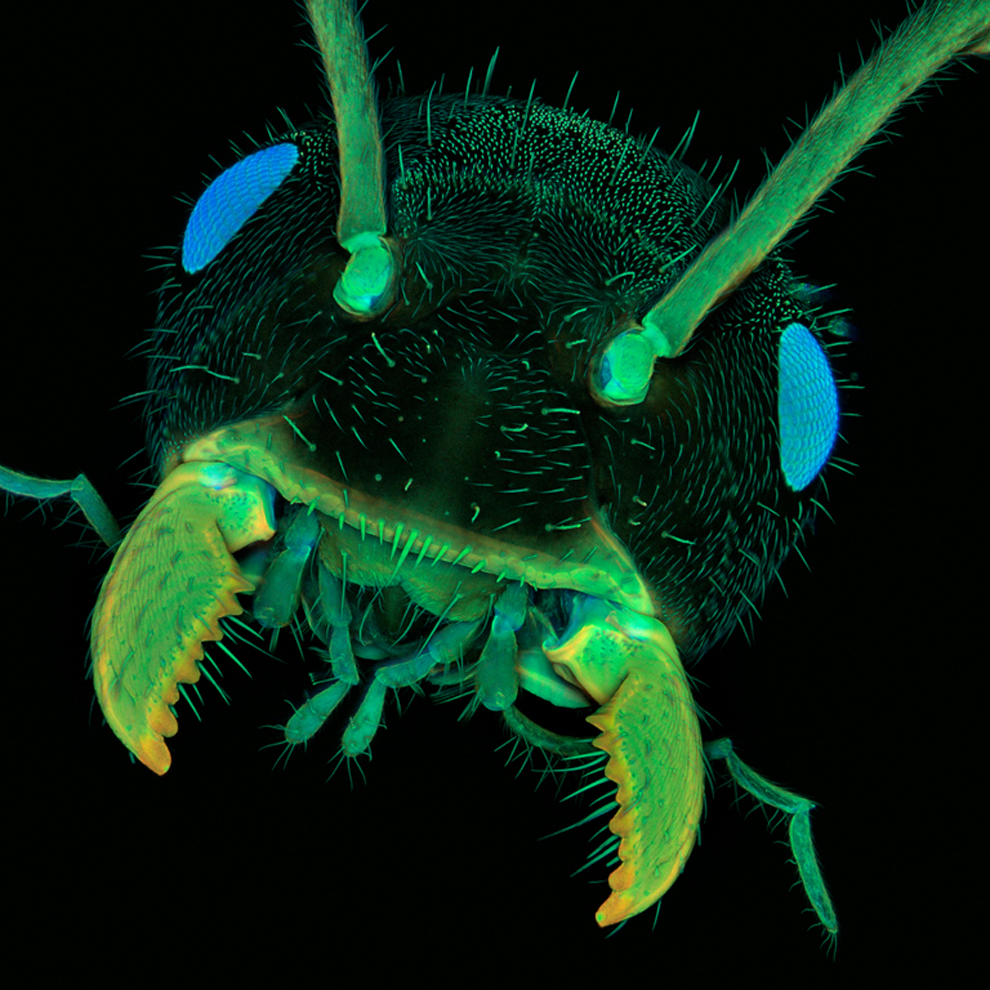
An ant head magnified ten times and photographed by Dr. Jan Michels of Christian-Albrechts-Universität zu Kiel in Kiel, Germany using the confocal method with autofluorescence. (Dr. Jan Michels) 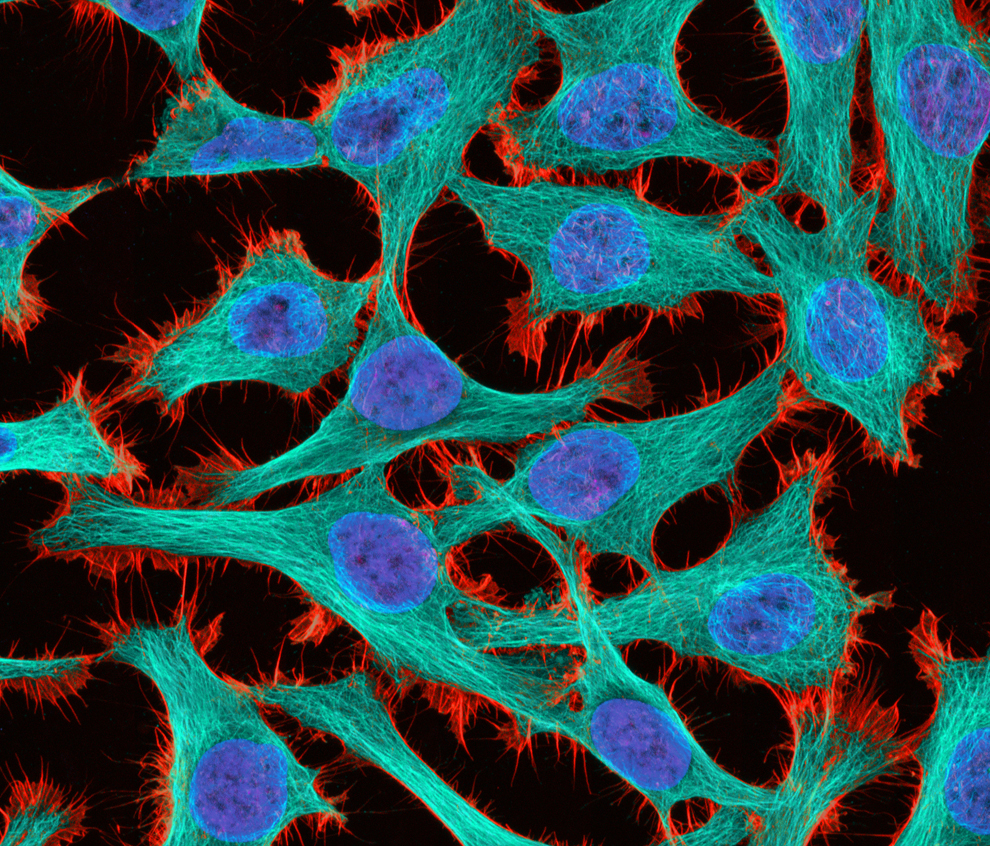
Thomas Deerinck of the National Center for Microscopy and Imaging Research in La Jolla, Calif. captured HeLa (cancer) cells at 300x magnification with 2-photon fluorescence. (Thomas Deerinck) 
A curare vine (Chondrodendron tomentosum) in cross-section at 45x magnification was shot by Dr. Stephen S. Nagy of Montana Diatoms in Helena, Montana using the brightfield method and digitally inverted. (Dr. Stephen S. Nagy) 
Using reflected light, Yanping Wang of the Beijing Planetarium in Beijing captured sand at 4x magnification. (Yanping Wang) 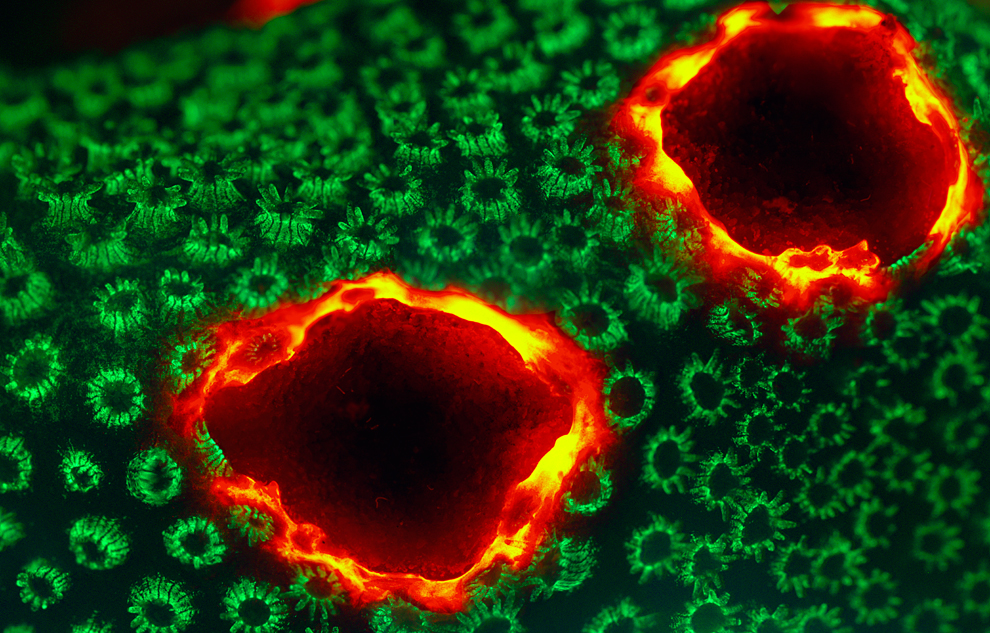
Lobe coral (Porites lobata) displays tissue pigmentation response with red fluorescence and epifluorescence with triple band (U/B/G) excitation in this image by James H. Nicholson of the Coral Culture and Collaborative Research Facility, NOAA/NOS/NCCOS/CCEHBR & HML in Charleston, S.C. (James H. Nicholson) 
Dr. Christopher Guerin of the Flanders Institute of Biotechnology in Ghent, Belgium photographed cultured cells growing on a bio-polymer scaffold using the confocal method at 63x magnification. (Dr. Christopher Guerin) 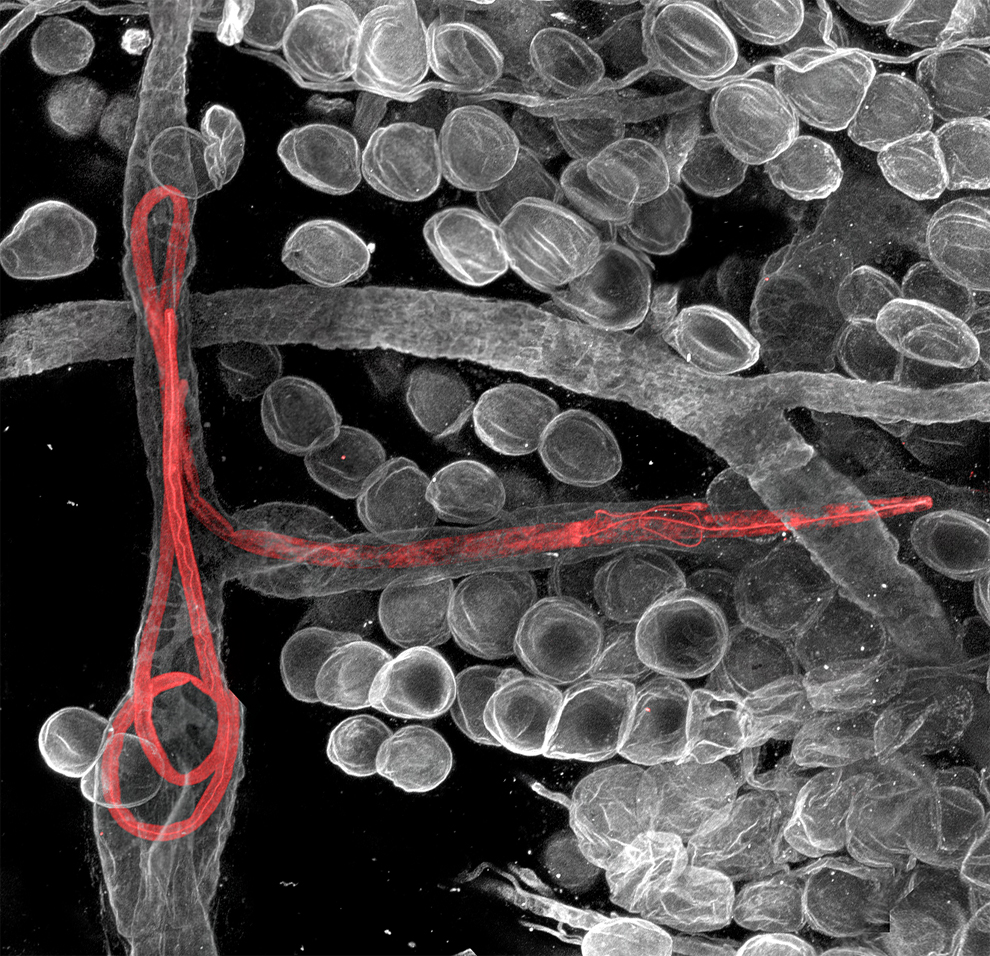
Dr. Witold Kilarski of the EPFL-Laboratory of Lymphatic and Cancer Bioengineering in Lausanne, Switzerland shot Litomosoides sigmodontis (filaria worms) inside lymphatic vessels of the mouse ear at 150x magnification using aFluorescent confocal microscopy. (Dr. Witold Kilarski) 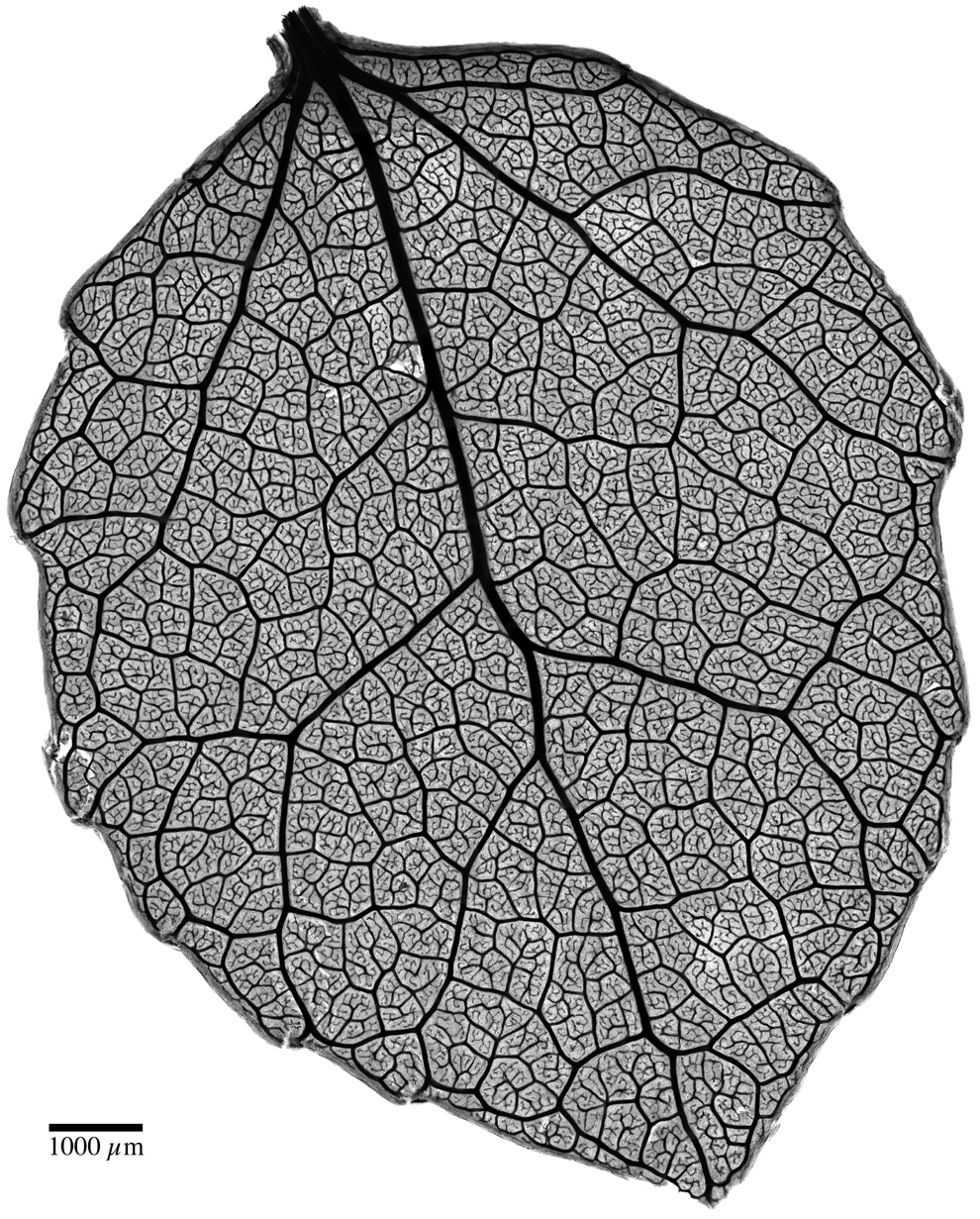
The venation network of a young quaking aspen leaf (Populus tremuloides) was magnified 4 times by Benjamin Blonder and David Elliott of the University of Arizona in Tucson utilizing a brightfield image of safranin-stained tissue. (Benjamin Blonder and David Elliott) 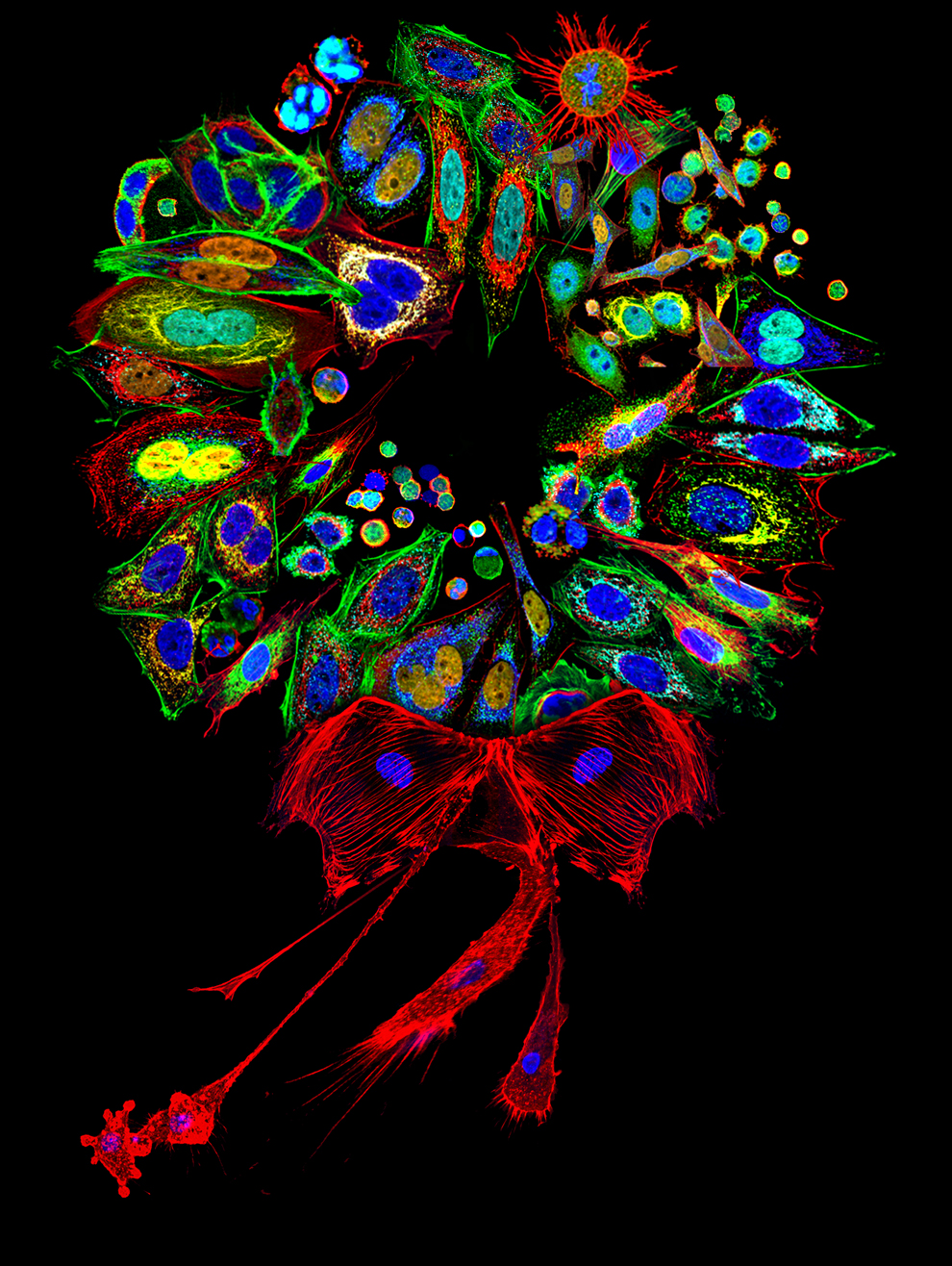
Dr. Donna Stolz of the University of Pittsburgh assembled a wreath collage of mammalian cells stained for various proteins and organelles magnified from 220x to 2000x. (Dr. Donna Stolz) 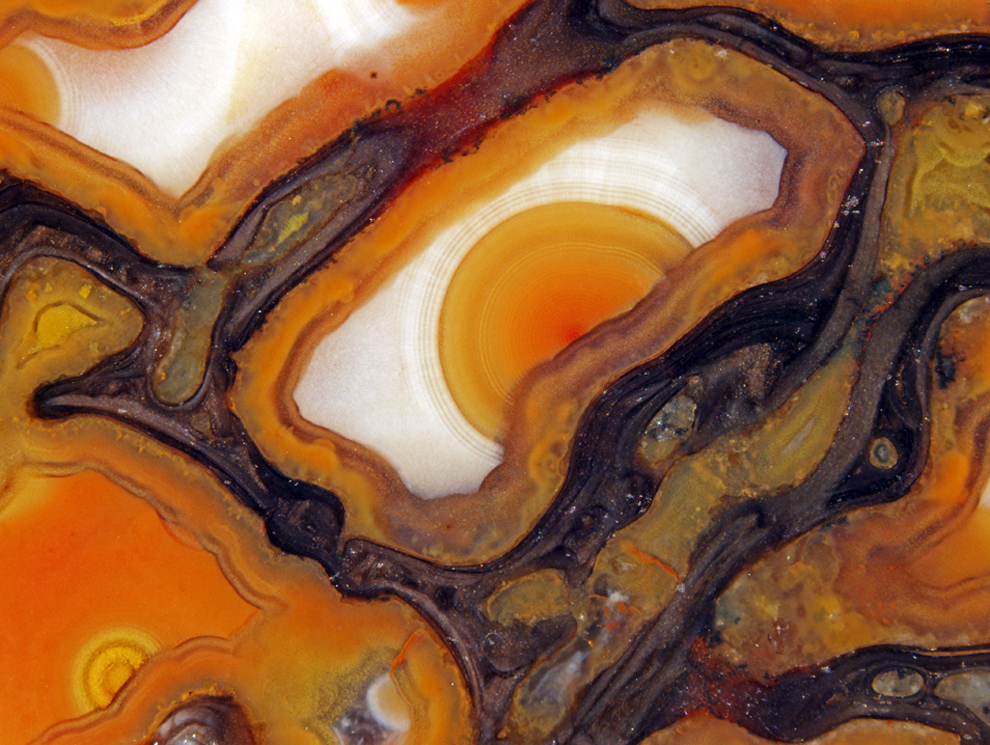
Douglas Moore of the University of Wisconsin - Stevens Point used stereomicroscopy and fiber optics to photograph unpolished agatized ca. 150 million years old dinosaur bone cells magnified 42 times. (Douglas Moore) 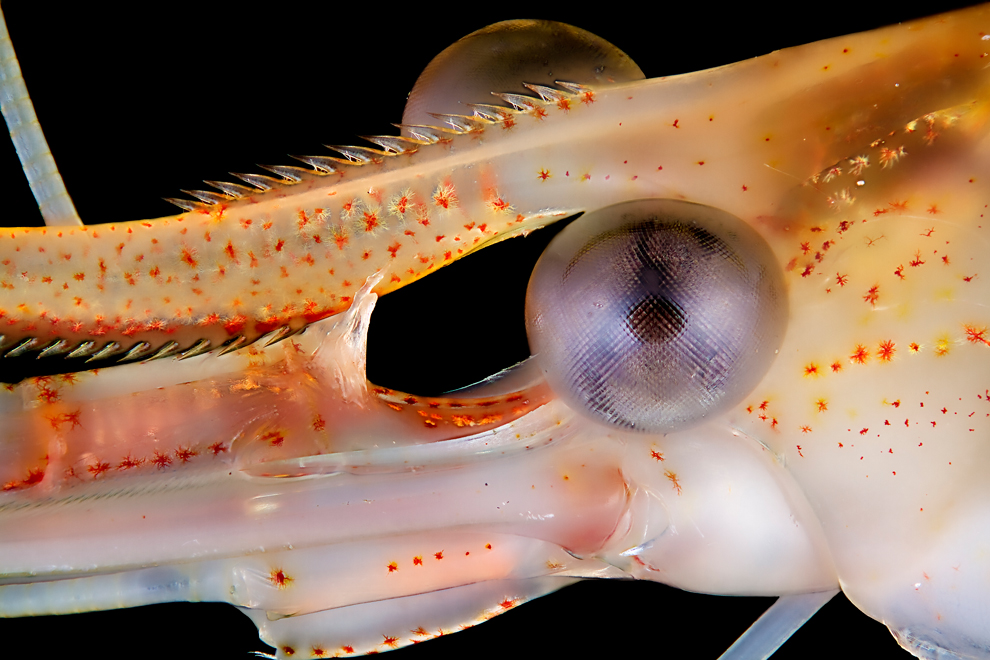
A freshwater shrimp eye and head shot with image stacking photography by Jose R. Almodovar at the Microscopy Center, Biology Department, UPR Mayaguez Campus in Mayaquez, Puerto Rico. (Jose R. Almodovar) 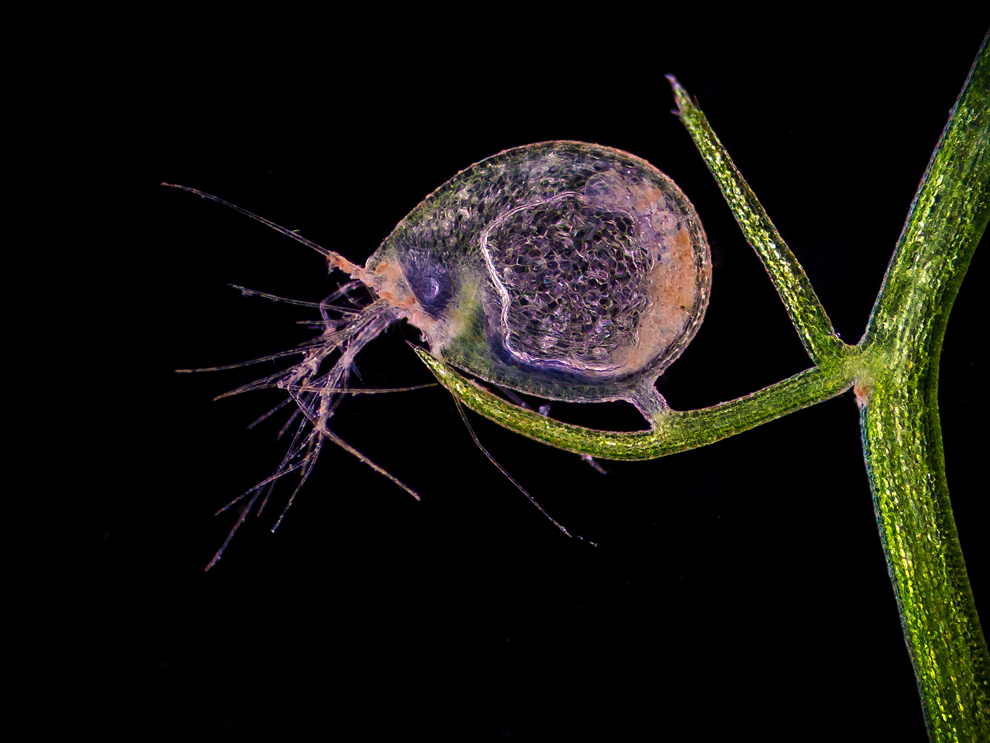
Bladderwort bladder (Utricularia gibber) photographed with the darkfield method and magnified 40x by Jose R. Almodovar at the Microscopy Center, Biology Department, UPR Mayaguez Campus in Mayaquez, Puerto Rico. (Jose R. Almodovar) 
A confocal image of giant liposomes of pulmonary surfactant was magnified 40 times by Dr. Jorge Bernardino de la Serna of MEMPHYS - Center for Biomembrane Physics, Department of Biochemistry and Molecular Biology in Odense, Denmark. (Dr. Jorge Bernardino de la Serna) 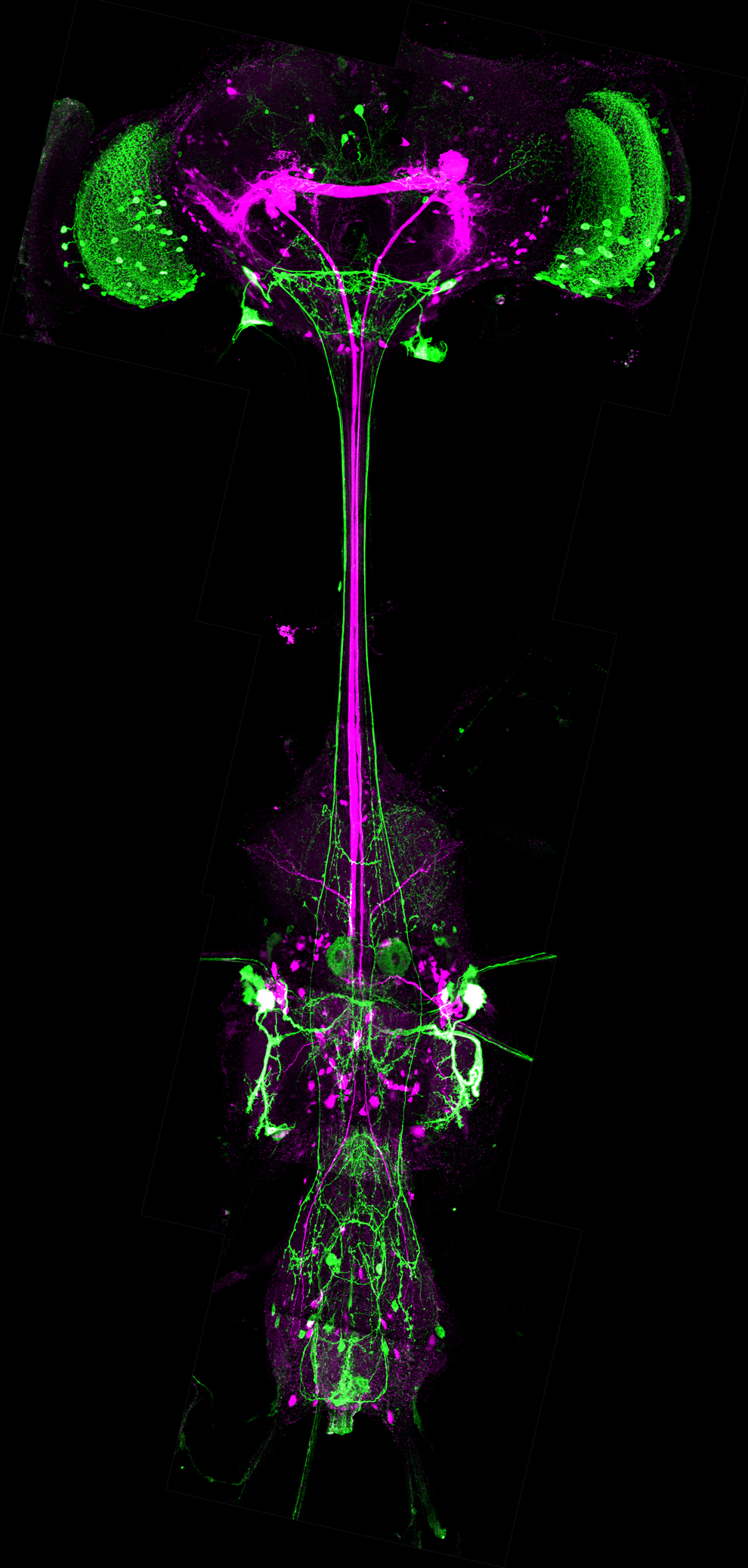
A confocal image of a reconstruction of a fruit fly (Drosophila sp.) nervous system by Dr. Jana Boerner of Florida Atlantic University in Boca Raton, Fla. (Dr. Jana Boerner) 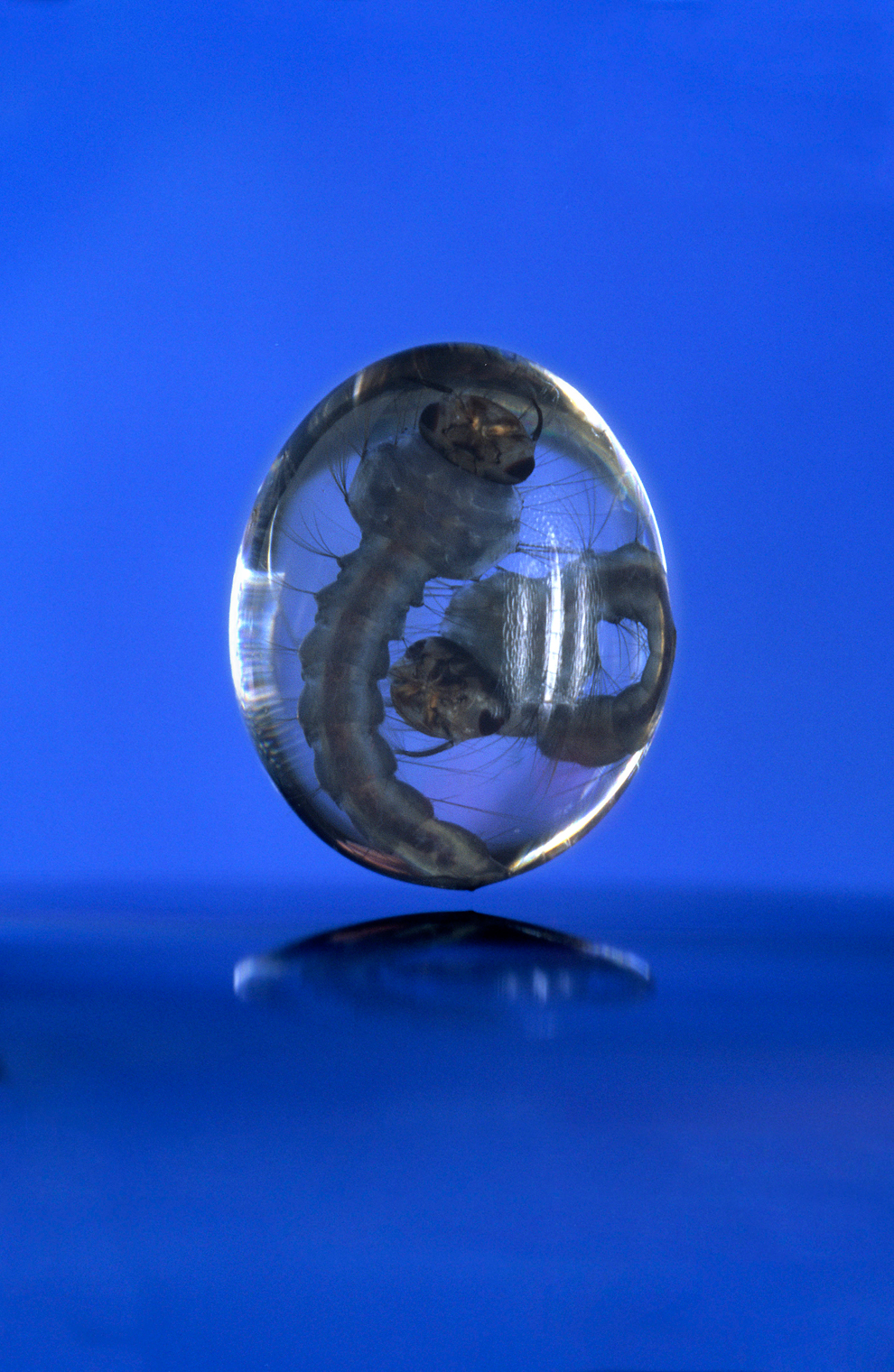
Using laser-triggered high-speed macrophotography, Dr. John H. Brackenbury of the University of Cambridge in Cambridge, UK captured a water droplet containing a pair of mosquito larvae. (Dr. John H. Brackenbury) 
Jonathan Franks of the University of Pittsburgh used the confocal method with autofluorescence to capture algae biofilm. (Jonathan Franks) 
The embryonic pectoral fin of a whitespotted bamboo shark (Chiloscyllium plagiosum) was photographed by Dr. Andrew Gillis of the University of Cambridge using stereomicroscopy with fiber optic lighting. (Dr. Andrew Gillis) 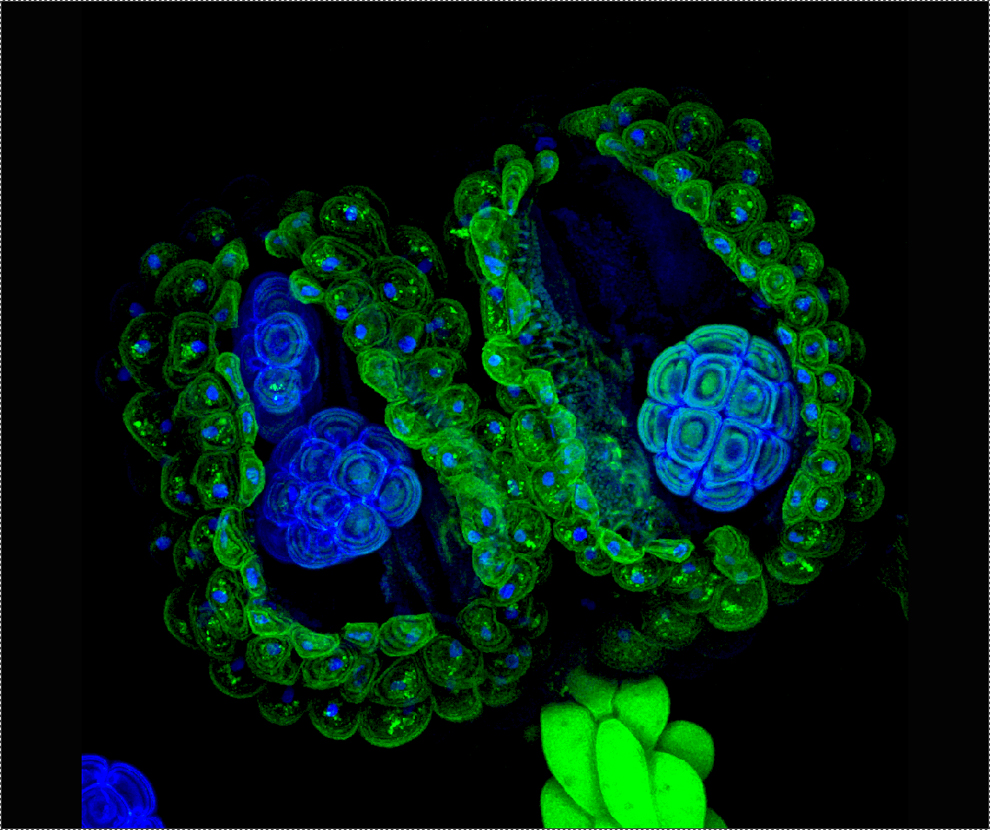
Dr. Marta Guervos of the Image Processing Unit, Scientific-Technical Facilities, University of Oviedo in Asturias, Spain photographed Acacia dealbata (Silver wattle tree) anther using the confocal method with autofluorescence. (Dr. Marta Guervos) 
Confocal image of Clausidium sp. nov., female with egg sacs, ventral view was made by Dr. Terue Kihara of the German Centre for Marine Biodiversity Research (DZMB) in Senckenberg am Meer, Germany. (Dr. Terue Kihara) 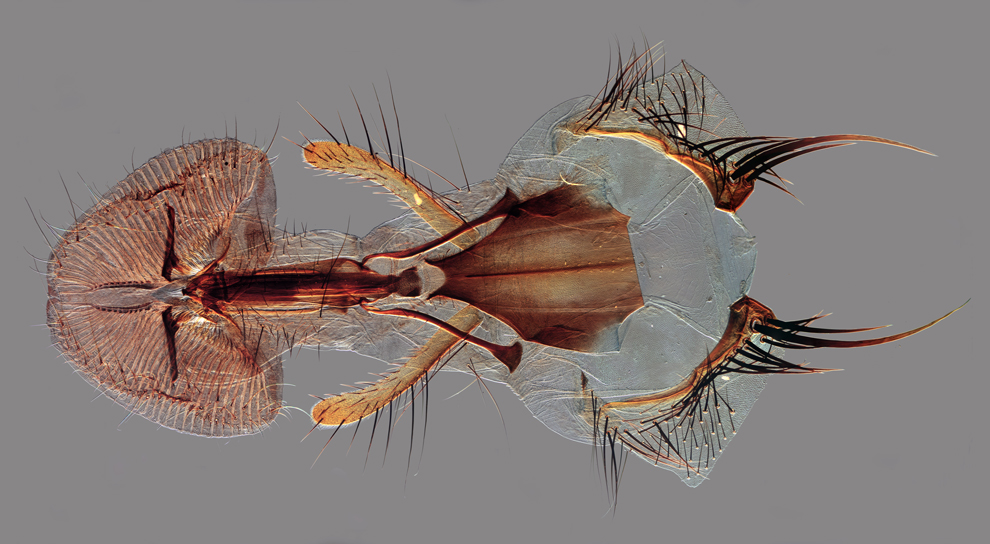
An antique mount of a blowfly (Calliphoridae) proboscis was photographed by Dr. Davis Linstead of Kent, UK with differential interference contrast. (Dr. David Linstead) 
The double compound eyes of a male St. Mark's fly (Bibio marci) photographed with reflected (episcopic) diffuse illumination by Dr. David Maitland of Feltwell, UK. (Dr. David Maitland) 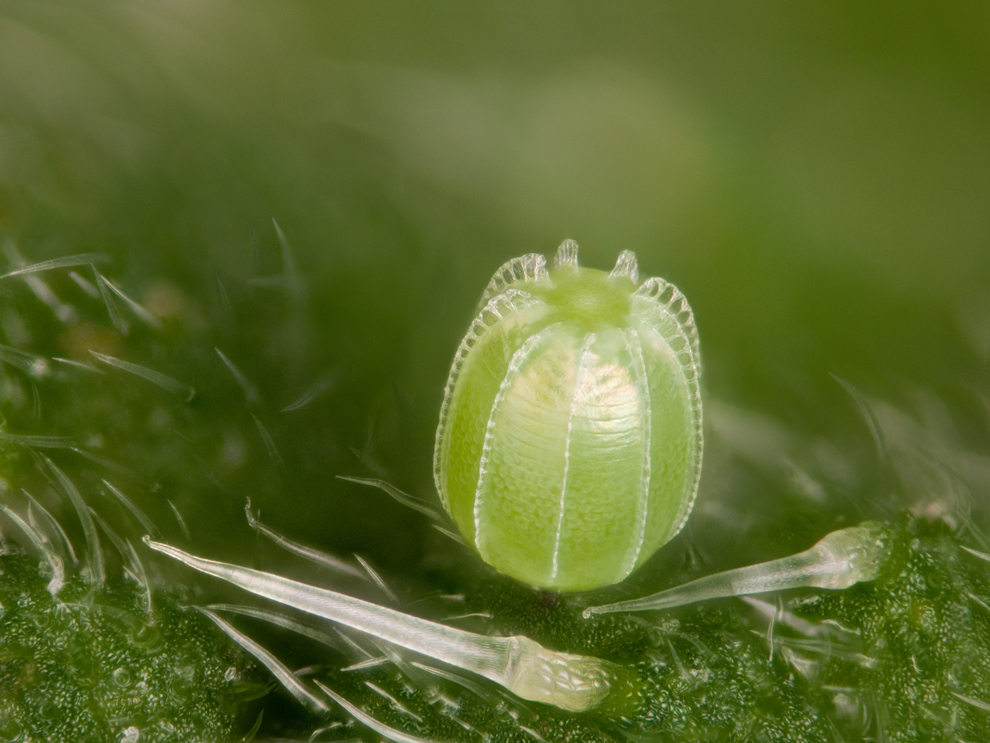
The egg of a red admiral butterfly (Vanessa atalanta) in stinging nettle (Urtica dioica) trichomes photographed by David Millard of Austin, Texas with diffuse incident illumination. (David Millard) 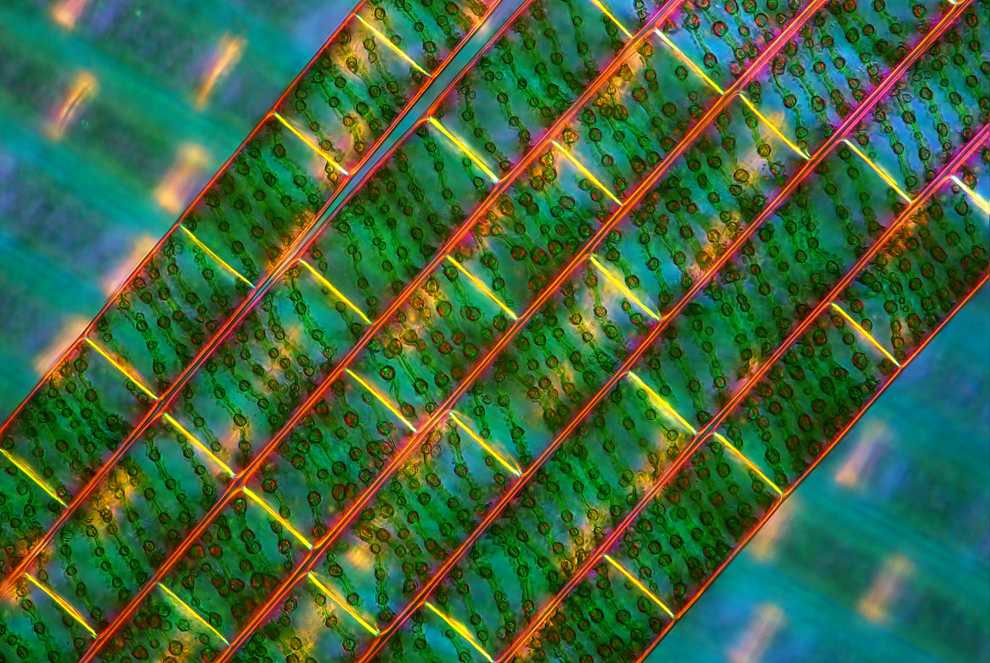
Marek Mis of Suwalki, Poland used polarized light to photograph green algae (Spirogyra sp.) filaments. (Marek Mis) 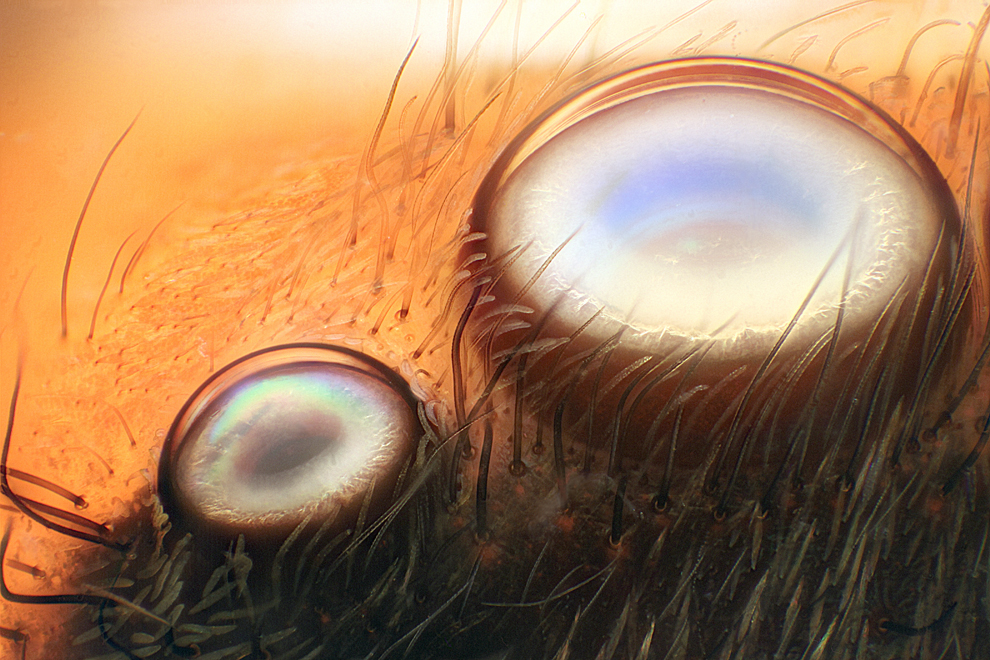
The eyes (anterior lateral and median) of a jumping spider photographed in reflected light by Walter Piorkowski of South Beloit, Illinois. (Walter Piorkowski) 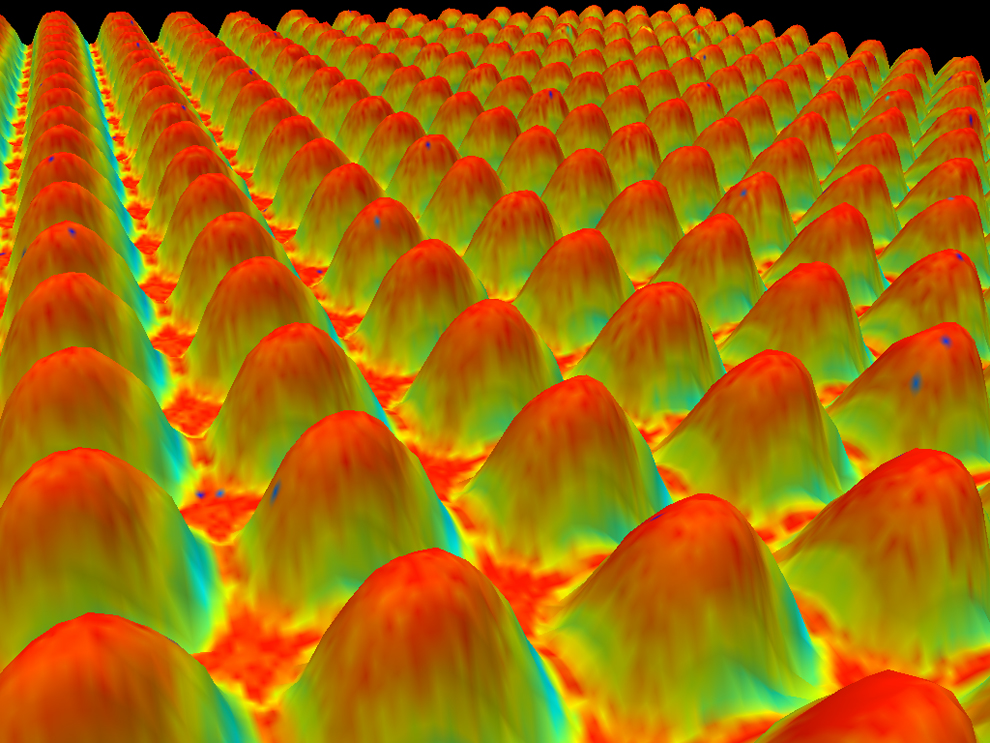
A confocal image of a charge coupled device (CCD) sensor, direct surface view, magnified 1000 times by Kevin Smith of MetPrep Ltd. in Warwickshire, UK. (Kevin Smith)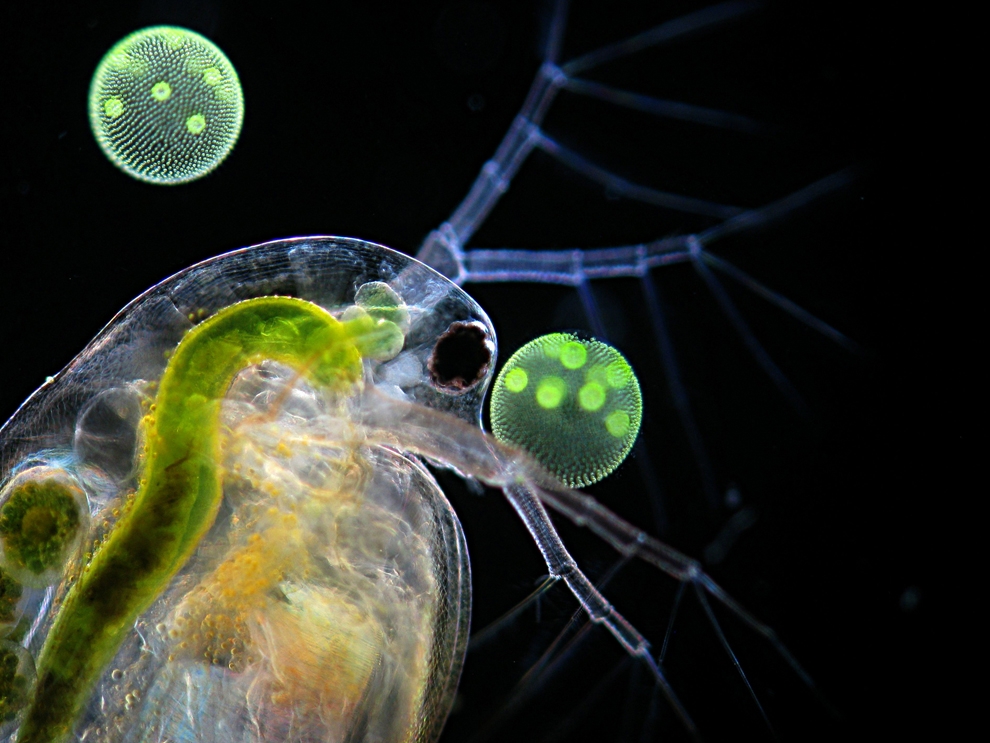
A water flea (Daphnia sp.) and green algae (Volvox sp.) captured with darkfield and flash by Dr. Ralf Wagner of Dusseldorf, Germany. (Dr. Ralf Wagner)
The mouth of a common fly photographed with fiber optic illumination by Dr. Havi Sarfaty of the Israeli Veterinary Association. (Dr. Havi Sarfaty)






































No comments:
Post a Comment